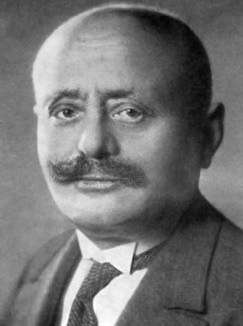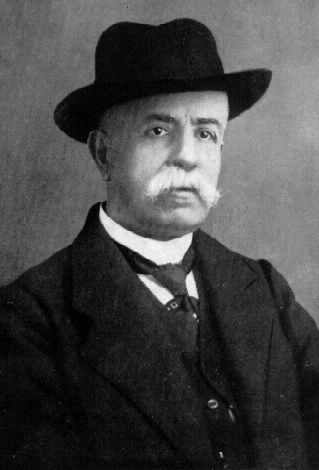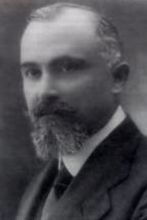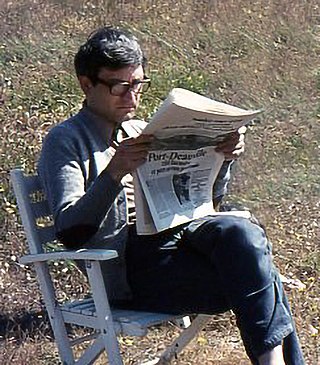Related Research Articles

Guido Fubini was an Italian mathematician, known for Fubini's theorem and the Fubini–Study metric.

Gregorio Ricci-Curbastro was an Italian mathematician. He is most famous as the discoverer of tensor calculus.

Giuseppe Vitali was an Italian mathematician who worked in several branches of mathematical analysis. He gives his name to several entities in mathematics, most notably the Vitali set with which he was the first to give an example of a non-measurable subset of real numbers.

The Scuola Normale Superiore in Pisa is a public university institution in Pisa and Florence, Tuscany, Italy, currently attended by about 600 undergraduate and postgraduate (PhD) students. Together with the University of Pisa and Sant'Anna School of Advanced Studies, it is part of the Pisa University System.

Cesare Arzelà was an Italian mathematician who taught at the University of Bologna and is recognized for his contributions in the theory of functions, particularly for his characterization of sequences of continuous functions, generalizing the one given earlier by Giulio Ascoli in the Arzelà–Ascoli theorem.

Ennio De Giorgi was an Italian mathematician who worked on partial differential equations and the foundations of mathematics.
The Sant'Anna School of Advanced Studies is a special-statute, highly selective public research university located in Pisa, Italy. Together with the University of Pisa and Scuola Normale Superiore di Pisa, it is part of the Pisa University System.
Giulio Ascoli was a Jewish-Italian mathematician. He was a student of the Scuola Normale di Pisa, where he graduated in 1868.

A Superior Graduate School is a completely independent institution from a legal point of view, which offers advanced training and research through university-type courses or is dedicated to teaching at graduate or post-doctoral level.

Enrico Giusti was an Italian mathematician mainly known for his contributions to the fields of calculus of variations, regularity theory of partial differential equations, minimal surfaces and history of mathematics. He was professor of mathematics at the Università di Firenze; he also taught and conducted research at the Australian National University at Canberra, at the Stanford University and at the University of California, Berkeley. After retirement, he devoted himself to the managing of the "Giardino di Archimede", a museum entirely dedicated to mathematics and its applications. Giusti was also the editor-in-chief of the international journal dedicated to the history of mathematics Bollettino di storia delle scienze matematiche.

Aldo Andreotti was an Italian mathematician who worked on algebraic geometry, on the theory of functions of several complex variables and on partial differential operators. Notably he proved the Andreotti–Frankel theorem, the Andreotti–Grauert theorem, the Andreotti–Vesentini theorem and introduced, jointly with François Norguet, the Andreotti–Norguet integral representation for functions of several complex variables.
Oliver Edmunds Glenn was an American mathematician at the University of Pennsylvania who worked on finite groups and invariant theory.
Sergio Campanato was an Italian mathematician who studied the theory of regularity for elliptic and parabolic partial differential equations.

Alessandro Faedo was an Italian mathematician and politician, born in Chiampo. He is known for his work in numerical analysis, leading to the Faedo–Galerkin method: he was one of the pupils of Leonida Tonelli and, after his death, he succeeded him on the chair of mathematical analysis at the University of Pisa, becoming dean of the faculty of sciences and then rector and exerting a strong positive influence on the development of the university.

Orazio Tedone was an Italian mathematical physicist. He is perhaps best known for the Larmor–Tedone formulae for solving Maxwell's equations.

Onorato Nicoletti was an Italian mathematician.

Pietro Corvaja is an Italian mathematician working in Diophantine geometry. He is a professor of geometry at the University of Udine.

Giovanni Ricci was an Italian mathematician.
Andrea Ferrara is an Italian theoretical astrophysicist and science communicator.

Giuseppe Da Prato was an Italian academic and mathematician. He taught at the elite Scuola Normale Superiore di Pisa. He mainly researched stochastic calculus, partial differential equations, and control theory.
References
- 1 2 3 Curriculum vitae (PDF), retrieved 2024-08-04
- ↑ Angelo Vistoli at the Mathematics Genealogy Project
- ↑ "Angelo Vistoli nuovo preside della Classe di Scienze per il prossimo triennio accademico". normalenews.sns.it (in Italian). 27 June 2024.